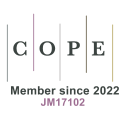REFERENCES
1. Guo J, Du X. Sensitivity analysis with mixture of epistemic and aleatory uncertainties. AIAA J 2007;45:2337-49.
2. Der Kiureghian A, Ditlevsen O. Aleatory or epistemic? Does it matter? Structural Safety 2009;31:105-12.
3. Beer M, Ferson S, Kreinovich V. Imprecise probabilities in engineering analyses. Mech Syst Signal Pr 2013;37:4-29.
4. Xiao M, Zhang J, Gao L. A Kriging-assisted sampling method for reliability analysis of structures with hybrid uncertainties. Reliab Eng Syst Safe 2021;210:107552.
5. Schöbi R, Sudret B. Global sensitivity analysis in the context of imprecise probabilities (p-boxes) using sparse polynomial chaos expansions. Reliab Eng Syst Safe 2019;187:129-41.
6. Yuan X, Faes MG, Liu S, Valdebenito MA, Beer M. Efficient imprecise reliability analysis using the Augmented Space Integral. Reliab Eng Syst Safe 2021;210:107477.
7. Elishakoff I. Essay on uncertainties in elastic and viscoelastic structures: from AM Freudenthal's criticisms to modern convex modeling. Compu Struct 1995;56:871-95.
8. Faes M, Moens D. Recent trends in the modeling and quantification of non-probabilistic uncertainty. Arch Computat Methods Eng 2020;27:633-71.
9. Ben-Haim Y. A non-probabilistic measure of reliability of linear systems based on expansion of convex models. Struct Saf 1995;17:91-109.
10. Ben-Haim Y, Chen G, Soong T. Maximum structural response using convex models. J Eng Mech 1996;122:325-33.
11. Jiang C, Bi R, Lu G, Han X. Structural reliability analysis using non-probabilistic convex model. Comput Method Appl Mech Eng 2013;254:83-98.
12. Möller B, Beer M. Fuzzy randomness: uncertainty in civil engineering and computational mechanics Springer Science & Business Media; 2004.
13. Ferson S, Kreinovich V, Grinzburg L, Myers D, Sentz K. Constructing probability boxes and Dempster-Shafer structures. Sandia National Lab. (SNL-NM), Albuquerque, NM (United States); 2015.
14. Schöbi R, Sudret B. Structural reliability analysis for p-boxes using multi-level meta-models. Probabilist Eng Mech 2017;48:27-38.
15. Helton JC, Johnson J, Oberkampf WL, Storlie CB. A sampling-based computational strategy for the representation of epistemic uncertainty in model predictions with evidence theory. Comput Method Appl Mech Eng 2007;196:3980-98.
16. Limbourg P, De Rocquigny E. Uncertainty analysis using evidence theory-confronting level-1 and level-2 approaches with data availability and computational constraints. Reliab Eng Syst Safe 2010;95:550-64.
17. Yang X, Liu Y, Ma P. Structural reliability analysis under evidence theory using the active learning kriging model. Eng Optimiz 2017;49:1922-38.
18. Xiao NC, Huang HZ, Wang Z, Pang Y, He L. Reliability sensitivity analysis for structural systems in interval probability form. Struct Multidisc Optim 2011;44:691-705.
19. Buckley JJ. Fuzzy probabilities: new approach and applications. vol. 115. Springer Science & Business Media; 2005.
20. Hurtado JE. Assessment of reliability intervals under input distributions with uncertain parameters. Probabilist Eng Mech 2013;32:80-92.
21. Alvarez DA, Hurtado JE. An efficient method for the estimation of structural reliability intervals with random sets, dependence modeling and uncertain inputs. Comput Struct 2014;142:54-63.
22. de Angelis M, Patelli E, Beer M. Advanced line sampling for efficient robust reliability analysis. Struct Saf 2015;52:170-82.
23. Kaymaz I. Application of kriging method to structural reliability problems. Struct Saf 2005;27:133-51.
24. Echard B, Gayton N, Lemaire M. AK-MCS: an active learning reliability method combining Kriging and Monte Carlo simulation. Struct Saf 2011;33:145-54.
25. Xiao M, Zhang J, Gao L. A system active learning Kriging method for system reliability-based design optimization with a multiple response model. Reliab Eng Syst Safe 2020;199:106935.
26. Kim SH, Na SW. Response surface method using vector projected sampling points. Struct Saf 1997;19:3-19.
27. Bourinet JM, Deheeger F, Lemaire M. Assessing small failure probabilities by combined subset simulation and support vector machines. Struct Saf 2011;33:343-53.
28. Luo CJ, Keshtegar B, Zhu S, Niu X. EMCS-SVR: Hybrid efficient and accurate enhanced simulation approach coupled with adaptive SVR for structural reliability analysis. Comput Method Appl Mech Eng 2022;400:115499.
29. Papadrakakis M, Lagaros ND. Reliability-based structural optimization using neural networks and Monte Carlo simulation. Comput Method Appl Mech Eng 2002;191:3491-507.
30. Bao Y, Xiang Z, Li H. Adaptive subset searching-based deep neural network method for structural reliability analysis. Reliab Eng Syst Safe 2021;213:107778.
31. Luo CJ, Keshtegar B, Zhu S, Taylan O, Niu XP. Hybrid enhanced Monte Carlo simulation coupled with advanced machine learning approach for accurate and efficient structural reliability analysis. Comput Method Appl Mech Eng 2022;388:114218.
32. Sobol' IM. Theorems and examples on high dimensional model representation. Reliab Eng Syst Safe 2003;79:187-93.
33. Balesdent M, Morio J, Brevault L. Rare event probability estimation in the presence of epistemic uncertainty on input probability distribution parameters. Methodol Comput Appl Probab 2016;18:197-216.
34. Xiong Y, Sampath S. A fast-convergence algorithm for reliability analysis based on the AK-MCS. Reliab Eng Syst Safe 2021;213:107693.
35. Ameryan A, Ghalehnovi M, Rashki M. AK-SESC: a novel reliability procedure based on the integration of active learning kriging and sequential space conversion method. Reliab Eng Syst Safe 2022;217:108036.
36. Huang SY, Zhang SH, Liu LL. A new active learning Kriging metamodel for structural system reliability analysis with multiple failure modes. Reliab Eng Syst Safe 2022;228:108761.
37. Li P, Wang Y. An active learning reliability analysis method using adaptive Bayesian compressive sensing and Monte Carlo simulation (ABCS-MCS). Reliab Eng Syst Safe 2022;221:108377.
38. Zhou J, Li J. IE-AK: A novel adaptive sampling strategy based on information entropy for Kriging in metamodel-based reliability analysis. Reliab Eng Syst Safe 2022;229:108824.
39. Matheron G. The intrinsic random functions and their applications. Adv Appl Probab 1973;5:439-68.
40. Sacks J, Welch WJ, Mitchell TJ, Wynn HP. [Design and analysis of computer experiments]: rejoinder. Statist Sci 1989;4:433-5.
41. Vert JP, Tsuda K, Schölkopf B. A primer on kernel methods. Kernel Methods in Computational Biology 2004;47:35-70.
42. Neal RM. Bayesian learning for neural networks. vol. 118. Springer Science & Business Media; 2012.
43. Jones DR, Schonlau M, Welch WJ. Efficient global optimization of expensive black-box functions. J Global Optim 1998;13:455-92.
44. Bachoc F. Cross validation and maximum likelihood estimations of hyper-parameters of Gaussian processes with model misspecification. Comput Stat Data Anal 2013;66:55-69.
45. Efficient global reliability analysis for nonlinear implicit performance functions. AIAA J 2008;46:2459–68.
46. Lv Z, Lu Z, Wang P. A new learning function for Kriging and its applications to solve reliability problems in engineering. Comput Math Appl 2015;70:1182-97.
47. Shannon CE. A mathematical theory of communication. SIGMOBILE Mob Comput Commun Rev 2001;5:3-55.
48. Eldred MS, Swiler LP. Efficient algorithms for mixed aleatory-epistemic uncertainty quantification with application to radiation-hardened electronics. Part Ⅰ: Algorithms and Benchmark Results, Sandia National Laboratories, SAND2009-5805, Albuquerque, NM 2009; doi: 10.2172/972887.
49. Hofer E, Kloos M, Krzykacz-Hausmann B, Peschke J, Woltereck M. An approximate epistemic uncertainty analysis approach in the presence of epistemic and aleatory uncertainties. Reliab Eng Syst Safe 2002;77:229-38.
50. Girard A, Rasmussen C, Candela JQ, Murray-Smith R. Gaussian process priors with uncertain inputs application to multiple-step ahead time series forecasting. NeurIPS 2002;15
51. Duvenaud D. Automatic model construction with Gaussian processes. Diss. University of Cambridge, 2014.
52. Shayanfar MA, Barkhordari MA, Roudak MA. An efficient reliability algorithm for locating design point using the combination of importance sampling concepts and response surface method. Commun Nonlinear Sci Numer Simul 2017;47:223-37.
53. Xu J, Du Y, Zhou L. A multi-fidelity integration rule for statistical moments and failure probability evaluations. Struct Multidisc Optim 2021;64:1305-26.
54. UFC4-023–03. Unified facilities criteria: design of buildings to resist progressive collapse. USA: United States Department of Defense; 2013.
55. Rong G. A Study on progressive collapse and reliability of reinforced concrete frame structures. Hunan University; 2018.
56. Su Y, Tian Y, Song X. Progressive collapse resistance of axially-restrained frame beams. ACI Struct J 2009;106:600-607.
57. Yu J, Tan KH. Experimental and numerical investigation on progressive collapse resistance of reinforced concrete beam column sub-assemblages. Eng Struct 2013;55:90-106.
58. Yu J, Tan KH. Structural behavior of reinforced concrete frames subjected to progressive collapse. ACI Struct J 2017;114:63-74.
59. Moan T. Target levels for reliability-based reassessment of offshore structures, in Proc., 7th Int. Conf. on Structural Safety and Reliability. Kyoto, 1997.






